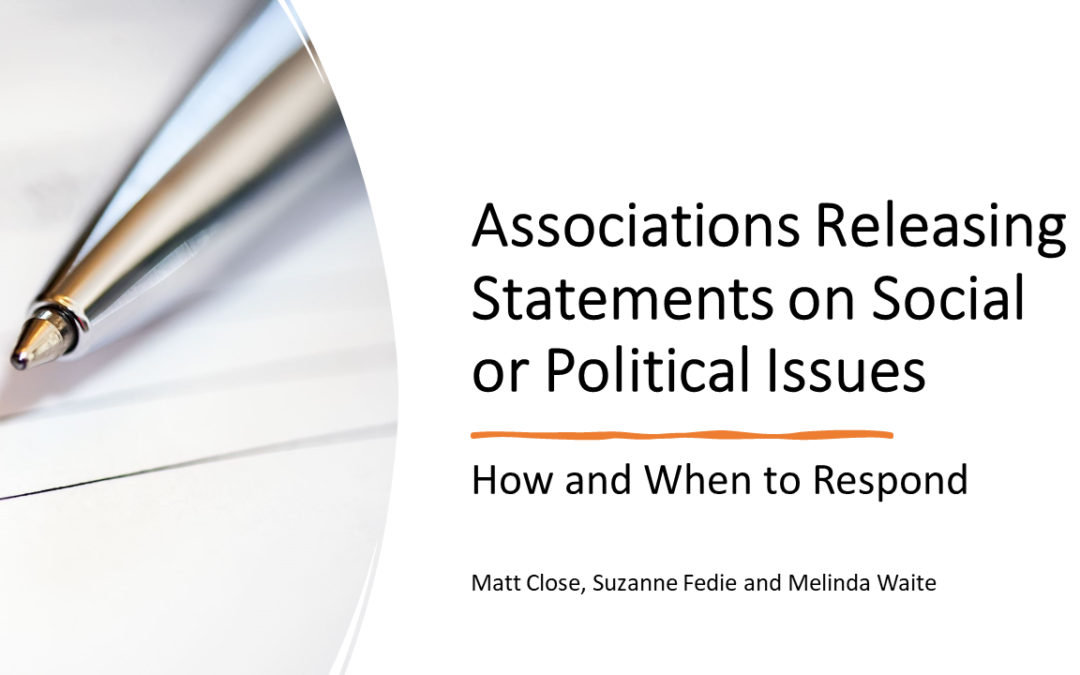Presented and Written by Matt Close, Membership and Marketing Manager, Suzanne Fedie, Executive Director, and Melinda Waite, Executive Director
What should associations do in response to highly charged political issues? Recent events in the United States and across the world have led many boards to issue position statements in response. To help associations better navigate rapidly changing political and policy dynamics, we attended the American Society of Association Executives’ (ASAE) webinar on the subject. We presented the knowledge gained from it as well as our own case stories to Acumen colleagues during a staff education. We also wanted to emphasize key points below so you would be better prepared if you ever had to engage in a policy statement discussion.
What to Consider Before Writing a Statement
1. What does the association’s history show?
2. What do members expect?
3. What do stakeholders expect?
4. What is the position of other related organizations?
5. What does the association stand for? (Instead of phrasing it as what we are against.)
How the Board Decides
1. The board has the final say in whether or not to issue a statement. Remember, the board is in service to the association.
2. Consider the options carefully and give everyone a chance to speak. Prevent groupthink. These discussions can give insight into the Board’s true diversity (or lack thereof).
3. Building consensus may be difficult. This can be an indicator that now might not be the time to issue a statement. Remember, once the statement is issued, the board must speak with one voice.
4. The association’s staff can provide research and compile data to help the board in making a decision, but this is ultimately the board’s decision.
Factors to Consider in the Board’s Decision
1. If the association is a chapter, see if it is required to align with the national or international association. However, chapters most likely have their own bylaws, policies, and stakeholders. It is common for a chapter to disagree with the national or international association, and it may choose to act differently.
2. Use a principle-based decision model when issuing a statement. (Does this fulfill our mission?) Avoid responding in an emotional manner.
3. Sometimes it is important to take time and consider the wording of the statement. An association’s most valuable asset is its name. The board must do its best to protect it.
4. Now more than ever, avoidance by associations on certain social or political issues may be challenged. Know that both the decision to speak out or not to speak may be critiqued.
Process Development and Best Practices
1. Creating a process and a best practice is crucial.
2. If the decision is made to issue a statement, follow an agreed-upon review process. (who drafts the statement, who reviews it, and how is it disseminated?)
3. After a statement is issued, monitor the response from members, stakeholders and the public on how they react.
Reacting to Comments after Releasing a Statement
1. Acknowledge authentically and seek feedback to use going forward.
2. Own it and make it right.
3. Give yourself grace and the opportunity to be vulnerable.
Next Steps
1. If an association does not have a policy or plan around issuing statements, consider discussing this at a future board meeting or strategic planning session.
2. Incorporate these steps into a crisis communications strategy or plan.
